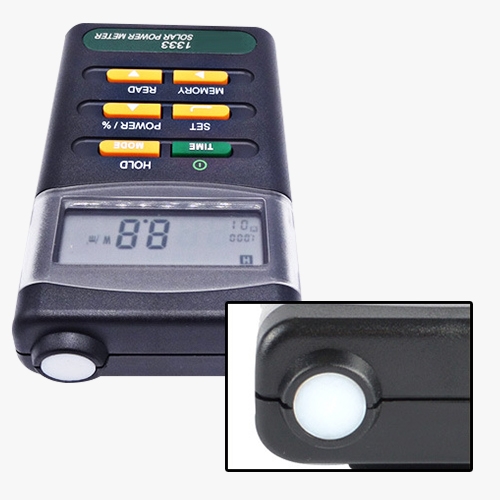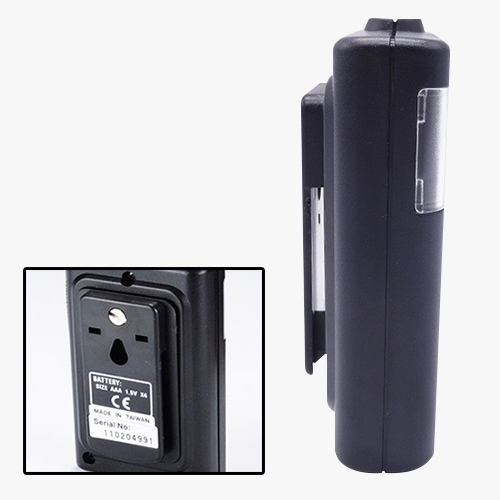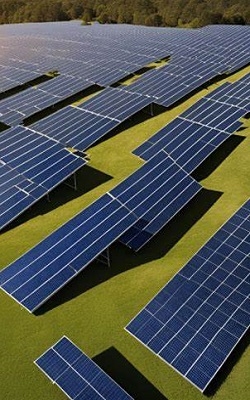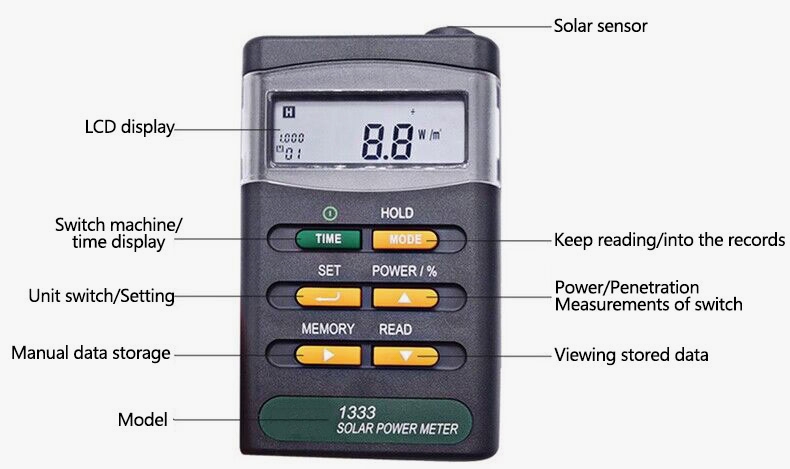Buy a digital solar btu power meter with a maximum measurement range of 2000 watts per square meter. It is highly accurate and responsive, making it a reliable tool for precise solar irradiance readings.

Digital Solar BTU Power Meter Functions
-
The digital solar btu power meter has a wide range of 2000W/m² and can measure solar power, solar penetration, and solar energy integration.
-
The portable solar btu power meter can be operated with one hand and is highly accurate in measuring solar radiation.
- The measurement sensor is located on the top of the meter for easy measurement.

Digital Solar BTU Power Meter Functions
-
Digital solar btu power meter with automatic cosine correction and automatic material transmittance measurement.
- The solar btu power meter has a 4-digit LCD digital display and a wide spectral range from 400 to 1100nm.
-
The solar btu power meter can store 99 sets of data manually and features an automatic switch-off function for power saving.
Applications
The SISCO digital solar but power meter is used in various applications, including solar panel installation and maintenance. It assesses sunlight levels for climate and agricultural studies and helps evaluate solar energy potential for designing energy-efficient buildings. Additionally, it is used to test the efficiency of other photovoltaic devices.

Assesses Sunlight Levels

Evaluates Solar Energy

Photovoltaic Devices

Solar Panel Installation
| Model | SISCO-SPM-TES1333 | SISCO-SPM-TES1333R |
| Display | 4-digit LCD digital display | |
| Measuring range | 2000W/m², 634BTU/(ft²*h) | |
| Resolution | 0.1W/m², 1BTU/(ft²*h) | |
| Spectral response wavelength | 400-1100nm | |
| Accuracy | ±10W/m²[±3BTU/(ft²*h)] or ±5% of the reading of the largest. Temperature coefficient: ±0.38W/m²/°C [±0.12 BTU/(ft²*h)/°C] when deviating from 25°C. |
|
| Angular accuracy | Cosine correction <5% (at angles <60°) | |
| Drift | <±2%/year | |
| Calibration parameters | User re-calibratable | |
| Over range display | OL | |
| Sampling rate | Approx. 4 times per second | |
| Manual data storage | 99 sets | |
| Automatic data storage | - | 43000 Groups |
| Data transfer | - | RS232 data cable |
| Power supply | 4 * AAA batteries | |
| Operating temperature and humidity | 0℃ to 50℃ less than 80%RH | |
| Storage temperature and humidity | -10℃ to 60℃ less than 70% RH | |
| Weight | 158g | |
| Dimensions | 110mm*64mm*34mm | |
| Standard accessories | Instruction manual, battery, tripod screw, box | Instruction manual, battery, tripod screw data cable, CD software disc, box |
Details

Q1: What is a solar power meter?
A1: A solar power meter is a device used to measure the amount of solar energy, typically in watts per square meter (W/m²), that is being received by a surface. It is commonly used in solar panel installations and environmental monitoring to assess solar irradiance, optimize the positioning of solar panels, and ensure that systems are performing efficiently.
Q2: How does a solar power meter work?
A2: A solar power meter works by using a sensor, typically a silicon photovoltaic cell or a thermopile, to detect and measure the intensity of solar radiation. When sunlight hits the sensor, it generates an electrical current proportional to the amount of solar energy received. The meter then converts this current into a readable value, usually displayed in watts per square meter (W/m²). This measurement helps users evaluate solar irradiance levels, which is crucial for optimizing solar panel performance and understanding environmental conditions.
Q3: How to choose the right solar power meter?
A3: Consider factors like measurement range, accuracy, ease of use, and additional features. For professional use, look for meters with high accuracy and durability. For casual or general use, more basic models may suffice.
Tips: How to read a solar btu power meter?
- To read a solar btu power meter, first, ensure it's properly set up and calibrated according to the manufacturer's instructions. Position the meter so its sensor is facing directly toward the sun, ensuring it's not obstructed by shadows or other objects.
- Once in place, turn on the meter and wait for it to stabilize. The display will show the solar irradiance measurement, usually in watts per square meter (W/m²). This value represents the amount of solar energy hitting the sensor. For consistent readings, check the meter regularly and compare the results with expected irradiance values based on your location and time of day.
- If the meter provides additional data, such as peak sunlight hours or total energy received over time, refer to the user manual to interpret these values correctly. Regularly cleaning the sensor and checking for any calibration issues will help maintain accuracy.
Thank you for buying industrial test and measurement equipment on SISCO.com, all products sold by SISCO and the partner cover a 12 months warranty, effective from the date of receiving the products.
What is covered?
SISCO is responsible for providing free spare parts, and free technical support to assist the customer to repair the defective products until the problem is solved.
What is not covered?
- Product purchased from anyone other than a SISCO store or a SISCO authorized reseller.
- Expendable parts.
- Routine cleaning or normal cosmetic and mechanical wear.
- Damage from misuse, abuse or neglect.
- Damage from use of parts other than SISCO approved.
- Damage from use outside the product’s usage or storage parameters.
- Damage from use of parts not sold by SISCO.
- Damage from modification or incorporation into other products.
- Damage from repair or replacement of warranted parts by a service provider other than a SISCO authorized service provider.
- Damage caused by the application environment not meeting the product usage requirements and the failure to perform preventive maintenance.

